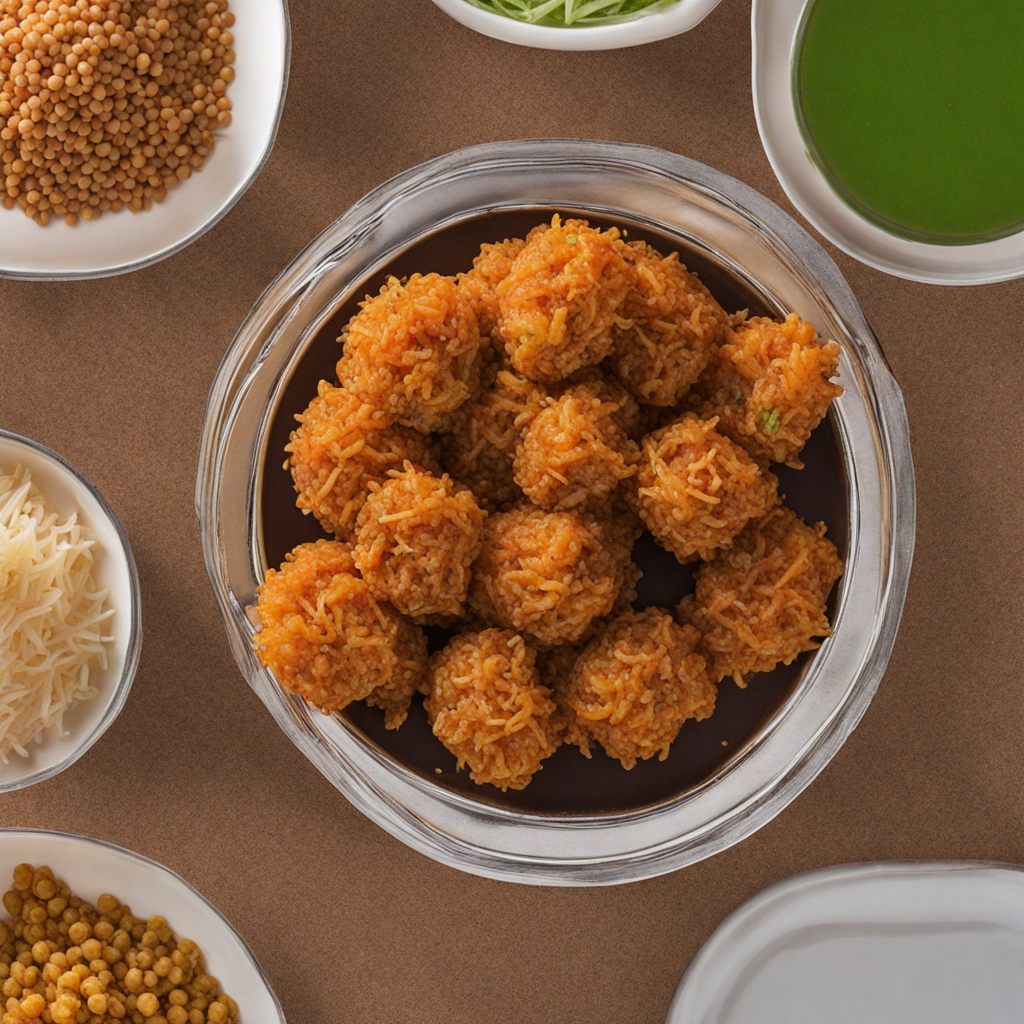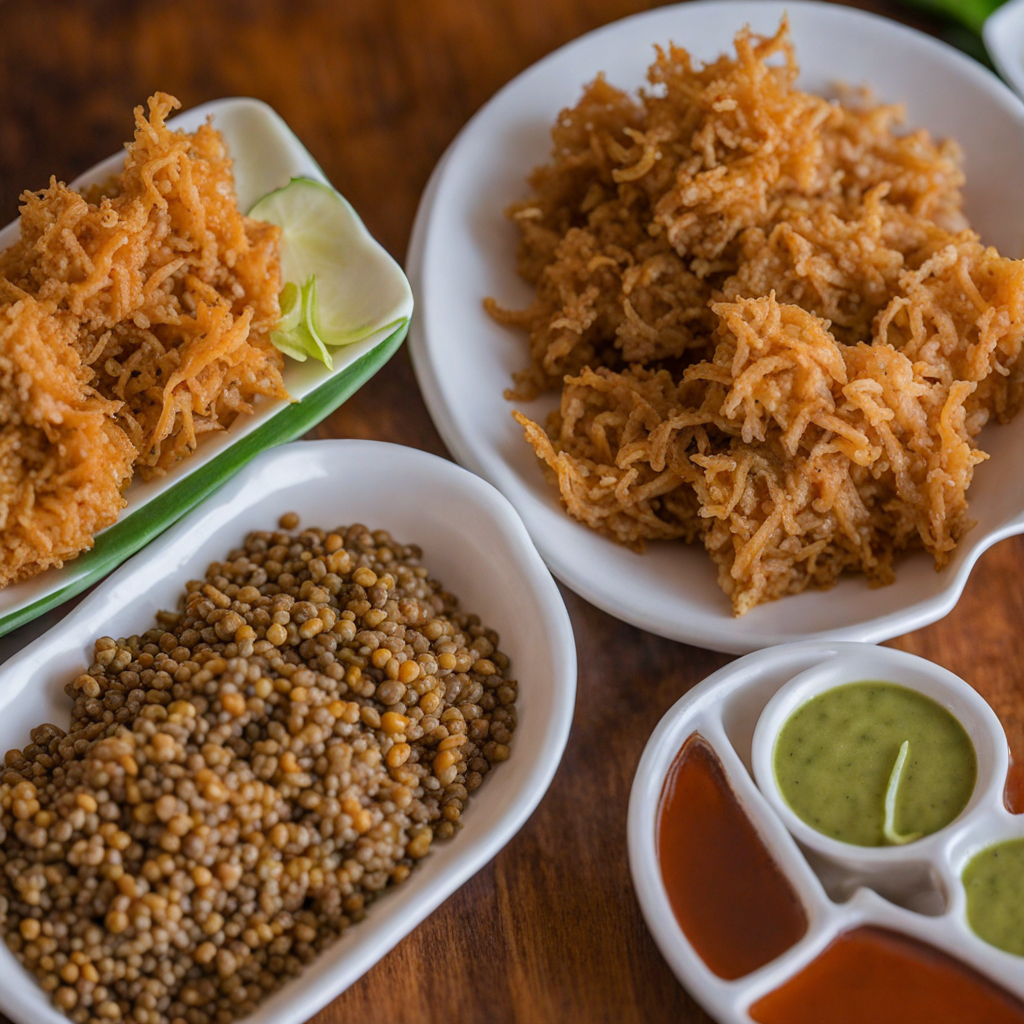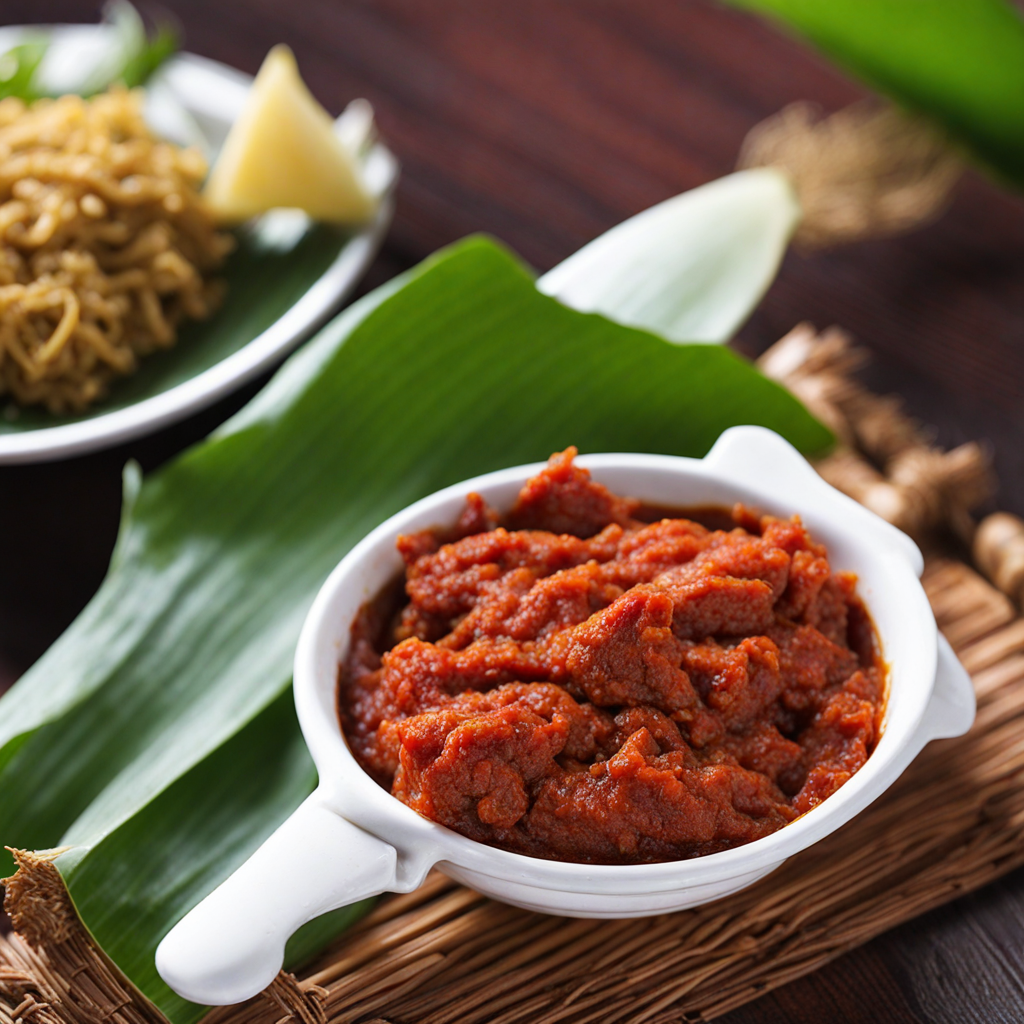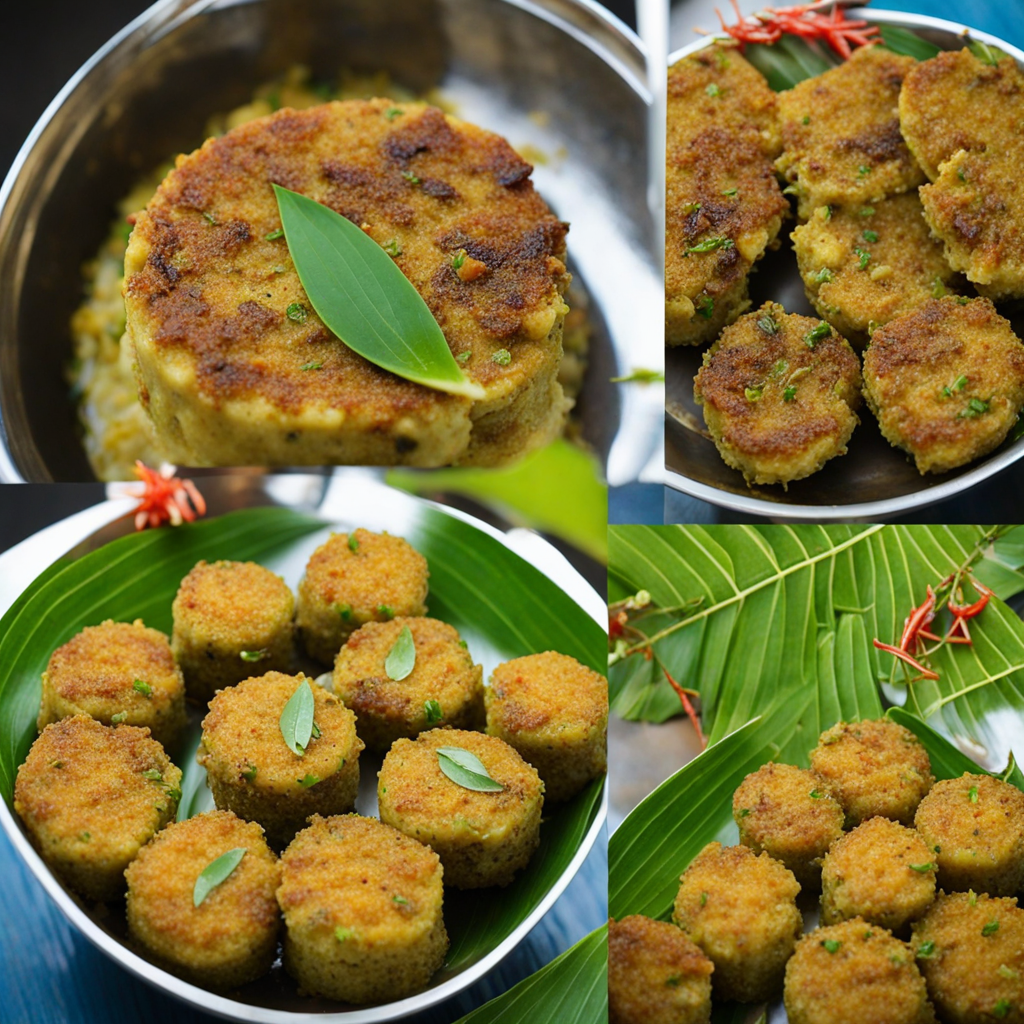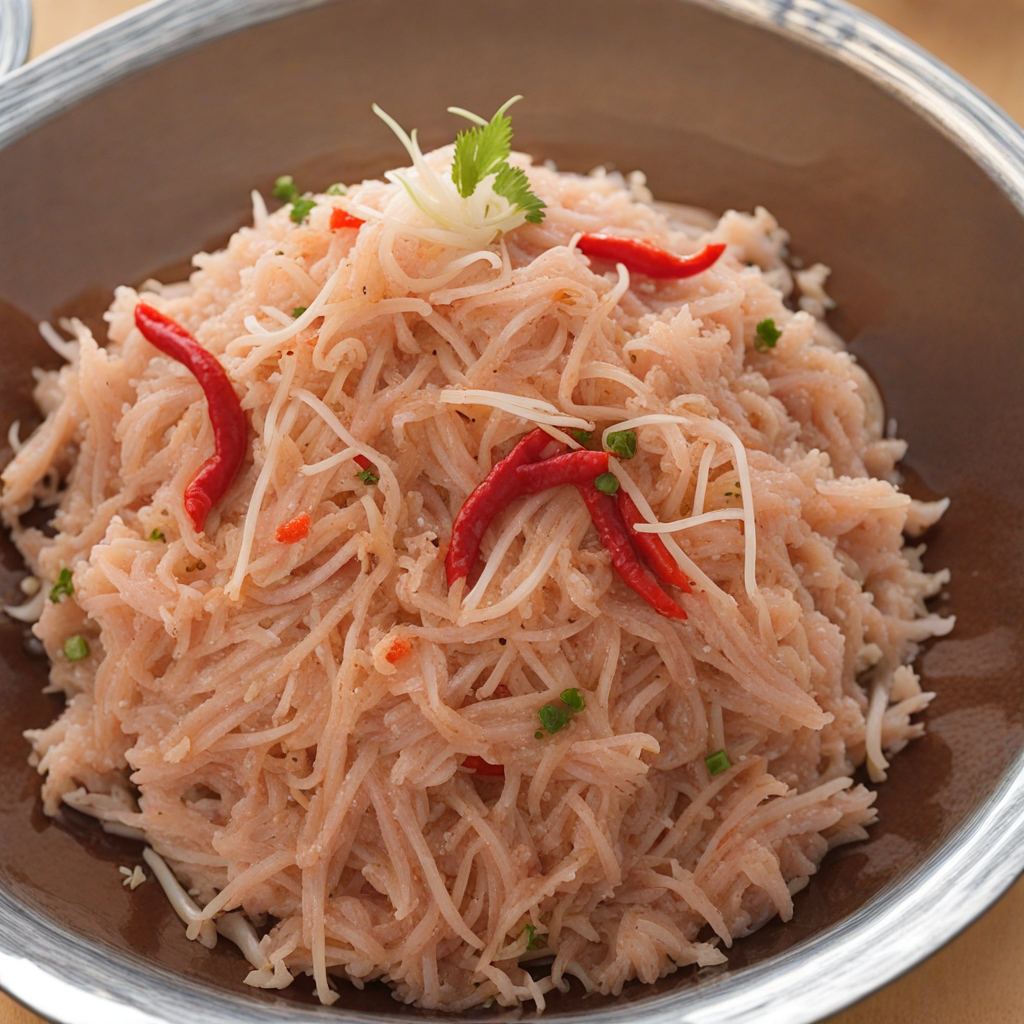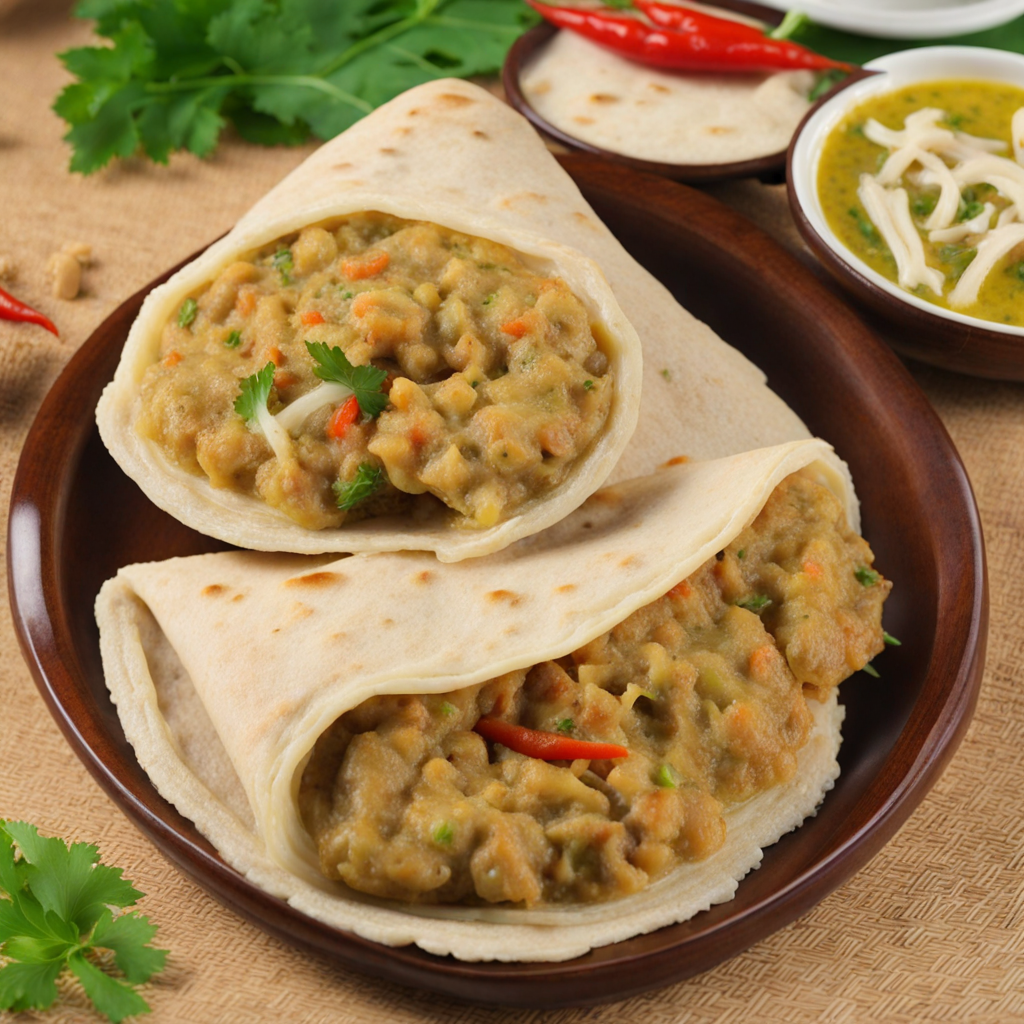Kavaabu
Kavaabu is a unique Maldivian delicacy that captures the essence of the islands' rich culinary heritage. This savory dish features a base of spiced fish, typically tuna, which is combined with a blend of aromatic spices, coconut, and sometimes vegetables. The fish is often marinated to enhance its flavors, then shaped into small fritters or patties. These are deep-fried to achieve a golden, crispy exterior while maintaining a tender and flavorful interior, making each bite a delightful experience. The preparation of Kavaabu showcases the use of fresh, local ingredients that are abundant in the Maldives. The addition of grated coconut adds a creamy texture and a hint of sweetness that balances the spices, which may include turmeric, chili, and coriander. This combination not only highlights the freshness of the fish but also pays homage to the Maldivian tradition of using coconut in many dishes. The dish is often served with a side of tangy dipping sauce, enhancing the overall flavor profile and providing a refreshing contrast. When enjoying Kavaabu, one can expect a burst of flavors that reflect the vibrant culture of the Maldives. The crispy outer layer gives way to the moist, flavorful filling, creating a satisfying contrast in textures. Often enjoyed as a snack or appetizer, Kavaabu is perfect for sharing, making it a popular choice at gatherings and celebrations. Whether served alongside a cold drink on a sunny beach or as part of a festive feast, Kavaabu offers a delicious glimpse into the culinary traditions of the Maldives that is sure to leave a lasting impression on any food enthusiast.
How It Became This Dish
The Culinary Journey of ކަވާބު (Kavaabu) from the Maldives The Maldives, a tropical paradise known for its stunning atolls and rich marine life, boasts a culinary heritage that reflects its unique geography and cultural diversity. Among its many traditional dishes, ކަާބު (Kavaabu) holds a special place. This savory treat not only tantalizes the taste buds but also encapsulates the story of the Maldivian people, their history, and their evolving culinary practices. Origins of Kavaabu Kavaabu is believed to have originated from simple, everyday cooking practices of the Maldivian islands. Traditionally made from a blend of rice flour, coconut, and a range of spices, Kavaabu is typically deep-fried, giving it a crispy exterior that contrasts with a soft, flavorful interior. The dish is generally seasoned with ingredients like fish, often tuna, which is a staple in Maldivian cuisine. Historically, the Maldives has been influenced by various cultures due to its strategic location along ancient maritime trade routes. Arab traders, Indian merchants, and even European colonizers have left their mark on Maldivian food culture. The introduction of spices and methods from these cultures contributed to the development of Kavaabu. The use of coconut, for instance, reflects the tropical environment of the islands, while the incorporation of fish showcases the reliance on the ocean as a primary food source. Cultural Significance Kavaabu is more than just a snack; it serves as a cultural emblem of the Maldives. It is often enjoyed during special occasions, family gatherings, and celebrations. In Maldivian households, it’s common to serve Kavaabu alongside tea, making it a popular choice during afternoon snacks or social events. The dish embodies the spirit of togetherness and hospitality, as families and friends gather to enjoy this delightful treat. The preparation of Kavaabu can also be a communal activity. Families often come together to make large batches, sharing stories and laughter in the process. This sense of community is vital to Maldivian culture, and Kavaabu serves as a delicious reminder of the bonds that tie people together. Ingredients and Preparation The beauty of Kavaabu lies in its simplicity and versatility. The basic ingredients include rice flour, grated coconut, and fish. The fish can vary, but skipjack tuna is the most common choice due to its abundance and significance in Maldivian fishing practices. The rice flour is often mixed with water to form a dough, which is then combined with the fish and coconut. Spices such as chili, onion, and sometimes even curry leaves are added to enhance the flavor profile. Once the mixture is prepared, it is shaped into small balls or patties, which are then deep-fried until golden brown. The result is a mixture of textures; the crispy exterior gives way to a moist, flavorful interior. The dish is typically served hot, often with a side of spicy chutney or a tangy dipping sauce, which adds another layer of flavor and complements the dish beautifully. Evolution and Modern Adaptations As with many traditional foods, Kavaabu has evolved over time. While the original recipe remains beloved, modern cooks have begun to experiment with new ingredients and techniques. For instance, some chefs incorporate other types of seafood, such as shrimp or even crab, while others may introduce vegetables into the mixture to cater to vegetarian preferences. In recent years, Kavaabu has also gained popularity beyond the Maldives. As Maldivian cuisine has begun to attract international attention, Kavaabu has found its way onto menus in restaurants around the world, often presented with a contemporary twist. This globalization of Maldivian food reflects a growing interest in diverse culinary traditions and the importance of sharing cultural heritage through cuisine. Culinary Festivals and Recognition The Maldives has made significant strides in promoting its culinary identity through various food festivals and events. These festivals celebrate traditional dishes, including Kavaabu, showcasing the rich flavors and techniques that define Maldivian cuisine. Local chefs often participate in cooking demonstrations, sharing their knowledge and love for traditional foods with both locals and tourists alike. Such events not only honor the history and cultural significance of dishes like Kavaabu but also encourage the younger generations to appreciate and preserve their culinary heritage. As more people engage with their food culture, traditional recipes are being documented and shared, ensuring that the legacy of Kavaabu and similar dishes endures. The Future of Kavaabu Looking ahead, Kavaabu stands as a testament to the resilience and adaptability of Maldivian cuisine. While the dish has deep historical roots, its ability to evolve with changing tastes and global influences ensures its continued relevance. The growing interest in sustainable and locally sourced ingredients also presents opportunities for innovation in the preparation of Kavaabu, encouraging chefs to explore new flavors while staying true to traditional practices. As the Maldives continues to attract tourists from around the world, Kavaabu serves as a delicious ambassador of its culinary culture. Visitors to the islands are often eager to experience authentic Maldivian cuisine, and Kavaabu provides a perfect introduction to the flavors and traditions that define this beautiful archipelago. Conclusion In summary, ކަާބު (Kavaabu) is not just a dish; it is a narrative woven into the fabric of Maldivian culture. Its origins reflect the influences of trade, geography, and community, while its evolution showcases the adaptability of traditional cuisine in the face of modern culinary trends. As it continues to be enjoyed in homes, at gatherings, and in restaurants worldwide, Kavaabu stands as a delicious reminder of the rich history and cultural significance of Maldivian food, inviting all to partake in its delightful story.
You may like
Discover local flavors from Maldives


